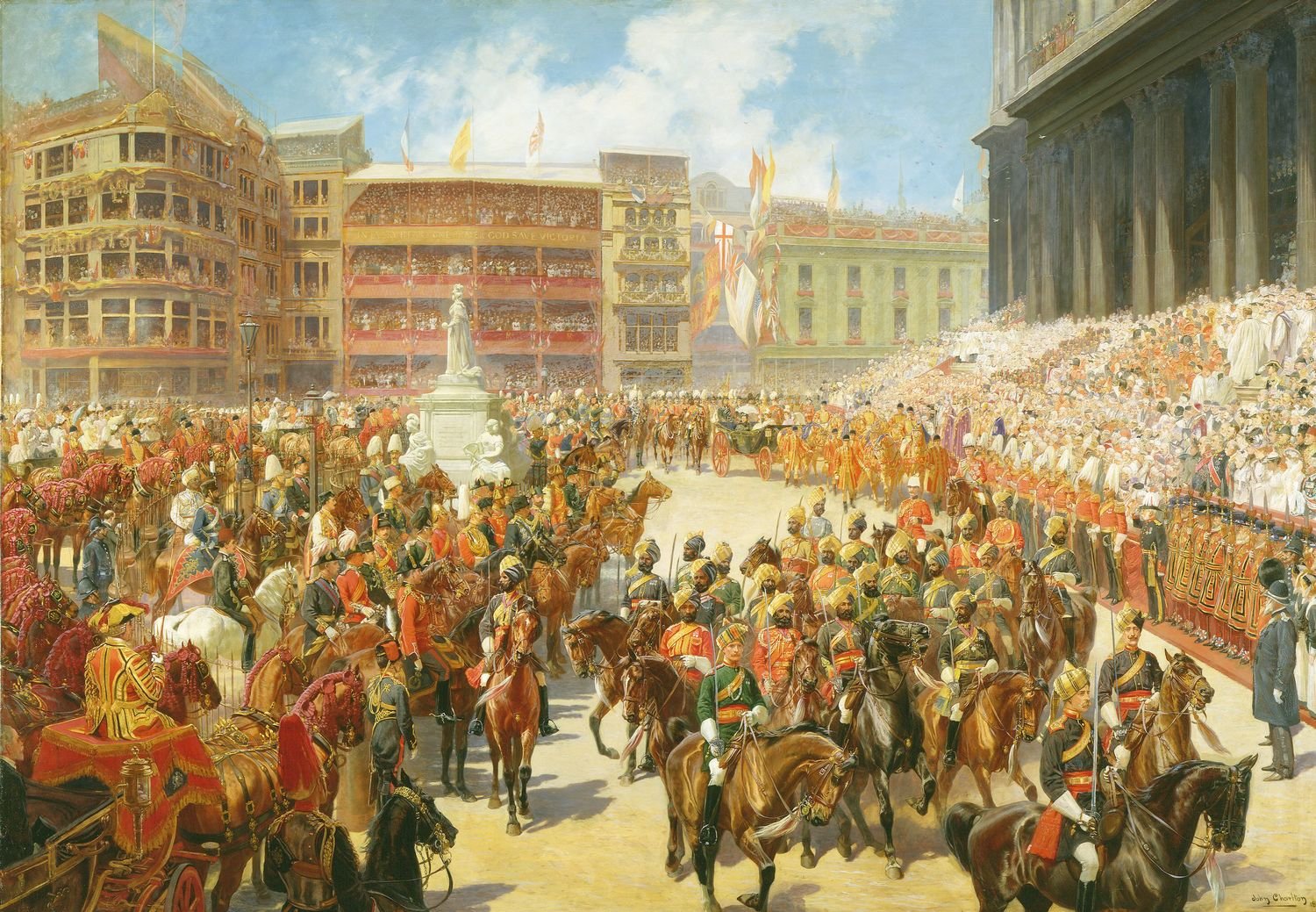
Royal Jubilees
Milestone years have been celebrated in long reigns since George III
Vase and cover
1897RCIN 50201
A large vase and cover, surmounted by a figure of Pallas Athena with helmet, spear and shield, holding aloft a laurel wreath; she stands on a dome of lotus leaves with a wreath of laurel forming the knop. The vase has a massive ovolo border on a striated ground, and a band of berried laurel inset with medals of Queen Victoria on the front and Wilhelm II on back, the front engraved with a large laurel wreath containing an LX. The lower body consists of matt acanthus leaves, on an outspreading foot with a beaded rim and border of ovolo and dart, with engraved inscription on foot.
Relations between Queen Victoria and her grandson Wilhelm II were strained at the time of her Diamond Jubilee in 1897 and she refused to invite him to the celebrations, insisting that his behaviour was unstable and difficult. Nevertheless he presented his grandmother with this vase to mark the occasion, stating in a letter to her that he had commissioned it the previous autumn, to his own design. The vase was intended as a gift from 'all her Prussian grandchildren'. The Kaiser appears to have been acting disingenuously and in fact the design of the vase was created for a rowing regatta earlier in the year, and was simply reused for Queen Victoria's Jubilee (Vicky & the Kaiser, p.159).
The vase is the work of Otto Rohloff, a sculptor and chaser from Berlin, who taught at the Kunstgewerbeschule. Rohloff undertook a number of metalwork commissions for the imperial family including work on the bronze chandeliers in the Empfangszimmer of the Berlin Schloss and mounts on several items of furniture. Rohloff was also responsible for various commemorative busts and plaquettes bearing portraits of the Kaiser which were presented as mementoes on state occasions. In 1899 when Wilhelm II visited Cologne, Rohloff created a commemorative cup (the Kronprinzenbecher), in the style of a seventeenth century work, but with a large modelled finial in the form of a figure of a burgher. He went on to win a gold medal at the 1900 Paris exhibition and in 1901 was responsible for the bronze centrepiece that was a gift from the Kaiser to Edward VII (Victoria & Albert, Vicky & the Kaiser, p.161). For the creation of this vase, Rohloff collaborated with Fritz Behrendt, another teacher at the Kunstgewerbeschule, who taught modelling, often making his students work from stuffed animals and plant specimens.
Struck on base with city mark of Berlin, .800 fineness mark, and maker's mark. O. ROHLOFF; stamped on base, F. BEHREND SCULP - O. ROHLOFF FUND; engraved on side with large laurel wreath containing LX; engraved around foot, WILHELM II IMP REX FEC.







